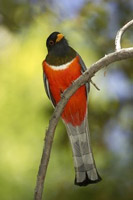
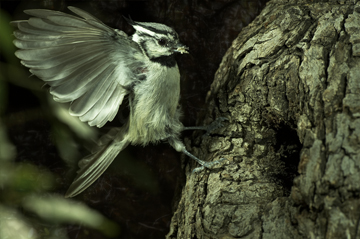
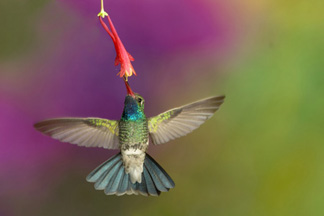



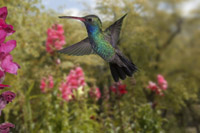 In our experience,
most digital shooters are still thinking 'film' when they shoot
digitally. Consequently, they are not exploiting the incredibleadvantages
digital photography has to offer. We'll show you how to get the
most out of your photography by incorporating digital's full potential!
In our experience,
most digital shooters are still thinking 'film' when they shoot
digitally. Consequently, they are not exploiting the incredibleadvantages
digital photography has to offer. We'll show you how to get the
most out of your photography by incorporating digital's full potential!|
|
|
|
|
|
|
|
|
|
|
|
For the last sixteen years we have been offering THE COMPLETE NATURE PHOTO COURSE in Pennsylvania, a film-based course that could also be and was used by digital photographers. However, digital imagery offers new problems and NEW ADVANTAGES that a wise photographer will incorporate into their shooting. The digital world is upon us and I'm excited tabout the photographic possibilities this provides. Now, for the first time, we're taking our Digital Complete Nature Photo Course to our 'second home,' or 'Hoot Hollow West,' our nick-name for the Santa Rita Lodge in Madera Canyon, approximately 40 miles south of Tucson, Arizona.
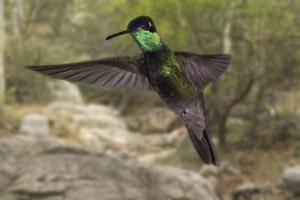 For
years we've been offering a hummingbird photo shoot at this location
(as we will again in 2006), but with the advent of digital new
possibilities have arisen. Not only does this area offer truly
fantastic shooting opportunities (see below), but with DIGITAL
you'll be able to see your results immediately, an important advantage
when photographing hummingbirds at our HIGH SPEED FLASH SETUPS.
For
years we've been offering a hummingbird photo shoot at this location
(as we will again in 2006), but with the advent of digital new
possibilities have arisen. Not only does this area offer truly
fantastic shooting opportunities (see below), but with DIGITAL
you'll be able to see your results immediately, an important advantage
when photographing hummingbirds at our HIGH SPEED FLASH SETUPS.
We are extremely excited about this course, as it will provide participants/students not only with in-depth instruction but also some of the finest photographic opportunities available. You'll have an opportunity to film landscapes, macro, wildlife, and high-speed flashed hummingbirds on our setups while you learn your photographic skills and DIGITAL WORKFLOW and basic Adobe Photoshop CS2 skills.
There are a variety of other outstanding software programs available that can be important to the digital photographer, including slide show programs like ProShow Gold, image management programs like Extensis Portfolio 8, image import and editing programs like PhotoMechanic, and RAW editing programs like Phase One's Capture 1. Depending upon time and class needs, we'll be illustrating and explaining at least some of these programs, if not all of them. All can be extremely helpful in your digital workflow.
Lodging at the Santa Rita Lodge is included in the course, as our several meals, as well as the use of our high-speed flash setups normally reserved exclusively for our hummingbird photo shoot participants. Limited to 10 participants, with two instructors for all field sessions, our people enjoy quality, personal care in this fast paced, challenging week.
Time Frame: Our Hoot Hollow West - DNPC will be held in Arizona's most productive photographic season -Spring. At this time of year, wildflowers are at their peak, and, depending upon the winter rains, these flowers may range from colorful cacti to sweeping beds of lupine, owl's clover, and Mexican poppies. Bird life is most active, with trogans returning to the canyon, hummingbirds aggressively defending feeders, and elf owls finishing up their early nesting season. Lizards, terrestrial and aquatic insects, and other macro subjects abound.
These courses are intense, requiring commitment and long hours on everyone's part. On some days we'll begin before sunrise, to capture the magic of early-morning light at an ancient Mission or in a saguara or octotillo flatland, and projects and teaching continues throughout the day. After the evening's break for dinner, we meet for image sharing, either by slides or digital projection and further instruction. On most days we are often ending after 10PM!
This sounds incredibly long, but the days are fun, and they will be extremely productive, and in truth, the time speeds by in an incredibly fast and enjoyable week.
Our Format: The DCNPC is divided into both lecture, Computer lab time, and field camera sessions in a flexible schedule that accommodates the group's needs and the photographic possibilities we wish to capture. Most lecture and in-door instruction and computer lab time occurs in the late-morning, early afternoon, and after dinner -- times when the light is NOT at its peak. Photography can occur at any time, but generally occurs before and after breakfast and late afternoon. This schedule results in some shooting every day, so you'll have plenty of time to practice your new skills!
Additionally, we will have our high-speed flashes setups in operation, and DNPC participants will have an opportunity to film in their 'off-hours' at these incredible sets. In this way, you'll not only learn all the topics we're teaching, you'll also be getting great hummingbird photos! There is no other course like this!
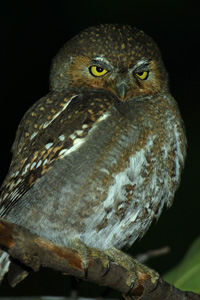
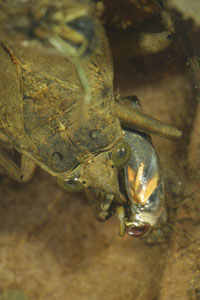 Our
Subjects: Few areas offer the bio-diversity of southern Arizona.
Let's consider the birds: On the grounds of our Lodge you'll be
filming 2-5 species of hummingbirds, Mexican gray-breasted jays,
Scott's orioles, yellow-eyed juncos, acorn woodpeckers, and more.
In the nearby desert flatlands there's Gambel's Quail, roadrunners,
towhees, and more. In the forests above the lodge one can find
flammulated owls, painted redstarts, elegant trogans -- pretty
exciting stuff. The elf owl illustrated was filmed within 100
yards of the lodge and remained on its perch for several hours.
Our
Subjects: Few areas offer the bio-diversity of southern Arizona.
Let's consider the birds: On the grounds of our Lodge you'll be
filming 2-5 species of hummingbirds, Mexican gray-breasted jays,
Scott's orioles, yellow-eyed juncos, acorn woodpeckers, and more.
In the nearby desert flatlands there's Gambel's Quail, roadrunners,
towhees, and more. In the forests above the lodge one can find
flammulated owls, painted redstarts, elegant trogans -- pretty
exciting stuff. The elf owl illustrated was filmed within 100
yards of the lodge and remained on its perch for several hours.
Macro photography can be especially rewarding. If conditions permit, we'll have a water tank setup for aquatic insects like giant water bugs and water scorpions (subject to water table conditions -- we can't make a stream that doesn't exist!), and we're likely to have some lizards and snakes to photograph during the week.
We'll be doing off-site field trips to the world-famous Arizona-Sonora Desert Museum for desert mammals and birds, as well as their terrific cactus garden and wild, open range birds, and to the nearby Saguaro areas for desert landscapes.
The images you will return with will be fantastic, and with digital, and your new Photoshop skills, we can almost guarantee that!
Our Participants: This course is designed for any photographer seriously interested in improving his or her skills both in photography and digital photography and who wish to further their knowledge of Adobe Photoshop CS 2. This course IS NOT for beginners who have not read their camera manuals or who own simple point and shoot cameras.The course is designed for digital SLR shooters, amateur or professional, who want to advance their skills in the most productive manner possible. Our emphasis in the 'digital darkroom' will be upon workflow -- importing images, naming files, batch renaming, RAW editting, and basic Adobe Photoshop CS 'tweaking' to fine-tune your digital image.
This special course is limited to ten (10), with at least two instructors for all field sessions.
Evaluating Your Skills: Participants are given a pre-course homework assignment designed to test your skills and provide a base-line for our assistance. Although doing the homework isn't mandatory, it's a fun exercise that assesses your abilities and helps us help you.
During the week, you'll have several shooting assignments to complete -- a week long portfolio (easy to get as we shoot during the week) and a short personal assignment, where some of these shoots will require computer manipulation as we composite images of varying exposure latitudes or composite for panoramas. Fun, challenging, and aimed at making you the best you can be -- you'll love the shooting!
Preparation: Prior to arrival you'll be sent a full list of equipment and suggested clothing, as well as your homework assignment.
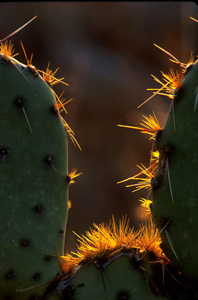
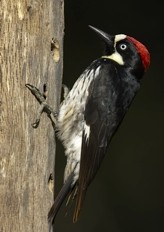
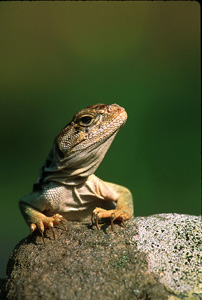
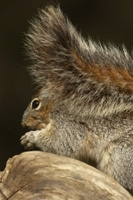 Equipment:
A mid-range zoom (70-200 with a 1.4X tele-converter), a 200 or
180mm macro, or a close focusing telephoto (300-400 is ideal)
is helpful for photographing the hummingbirds at the sets. Participants
will need a hot-shoe style flash for some of their work, including
triggering our High Speed Flash setups. You will not need your
own flash units to photograph the hummer sets -- only a flash
to trip our flashes via a slave unit. If you need help on buying
equipment for the course, please feel free to call us for our
best recommendations. The course is limited to digital SLR shooters
-- since we'll be discussing TTL flash, using varying focal length
lenses, etc. We feel that point-and-shoot digital camera users
would not obtain sufficient benefit because of the topics we'll
be covering. Your basic equipment should include a DIGITAL SLR
35mm camera, an 80-200 (or 75-300 or similar focal length), some
macro capability (either through closeup lenses, extension tubes,
or a true macro lens), and you might consider some telephoto reach,
via a converter or fixed lens, of 300mm or longer. However, a
tripod is required. We recommend either a Bogan 3021 or 3022 tripod,
with a ballhead, or a Gitzo tripod (your choice of models) and
a ballhead.
Equipment:
A mid-range zoom (70-200 with a 1.4X tele-converter), a 200 or
180mm macro, or a close focusing telephoto (300-400 is ideal)
is helpful for photographing the hummingbirds at the sets. Participants
will need a hot-shoe style flash for some of their work, including
triggering our High Speed Flash setups. You will not need your
own flash units to photograph the hummer sets -- only a flash
to trip our flashes via a slave unit. If you need help on buying
equipment for the course, please feel free to call us for our
best recommendations. The course is limited to digital SLR shooters
-- since we'll be discussing TTL flash, using varying focal length
lenses, etc. We feel that point-and-shoot digital camera users
would not obtain sufficient benefit because of the topics we'll
be covering. Your basic equipment should include a DIGITAL SLR
35mm camera, an 80-200 (or 75-300 or similar focal length), some
macro capability (either through closeup lenses, extension tubes,
or a true macro lens), and you might consider some telephoto reach,
via a converter or fixed lens, of 300mm or longer. However, a
tripod is required. We recommend either a Bogan 3021 or 3022 tripod,
with a ballhead, or a Gitzo tripod (your choice of models) and
a ballhead.
You will also need your own LAPTOP COMPUTER with Photoshop CS2 loaded. Both PC and MAC platforms will be acceptable since Photoshop functions similarly on either.
Location: These special DNPCs are based out of the Santa Rita Lodge in Madera Canyon, located approximately 40 miles south of Tucson, Arizona in the Santa Rita Mountains. The nearest full-service airport and car rental is the Tucson airport.
Lodging is included, based on a single occupancy at the Santa Rita Lodge. There will be a price discount if participants double up - however this is subject to availability both in terms of roommates and in terms of the number of rooms capable of accommodating doubles.
Several meals are included. Lunches are included when we're on the grounds of the Lodge, as well as a Welcome Dinner and Farewell Dinner. Breakfastes, if we're on a field-trip, will be included. Other breakfastes, most dinners, and lunches taken off-site are not included.
Price: The tuition for the DCNPC is $2,245 and includes all lodging (based upon single occupancy) and instruction. The fee does not include transportation to, during, or from the course.
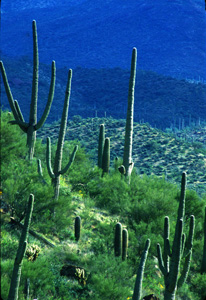 Exposure:
Recognizing middle-tones; exposing for all tonalities, gray, black,
and white; using your camera on manual and on spot metering mode;
using the sunny rules. You will be shooting your camera on Manual
Mode and on Spot or Center-weighted metering. For those students
who have only used matrix or evaluative metering on one of the
programmed modes (like A, S or Tv, or P) this is a radical departure
but an extremely important step in mastering photography.
Exposure:
Recognizing middle-tones; exposing for all tonalities, gray, black,
and white; using your camera on manual and on spot metering mode;
using the sunny rules. You will be shooting your camera on Manual
Mode and on Spot or Center-weighted metering. For those students
who have only used matrix or evaluative metering on one of the
programmed modes (like A, S or Tv, or P) this is a radical departure
but an extremely important step in mastering photography.
This topic, exposure, is one of the
KEYS to successful shooting, and you will master exposure during
this course! Everyone does!
We are convinced that we
offer the most complete and thorough treatment on exposure anywhere.
You will learn, and your photography will be changed forever.
In the DIGITAL world, mastering exposure is still critically important. However, digital shooters have the added advantage of seeing a histogram that illustrates the exposure values, and of shooting in RAW format to further adjust exposure. We'll explain the benefits of each.
Composition: Finding effective compositions, using lenses effectively; seeking the best perspective; understanding hyperfocal distance; knowing zones of sharpness; selective focus; and the rule of thirds. We approach this topic in several ways, in separate lectures on composition and on lenses, and through several in-field exercises where we review work in the field as classroom projects.
In the DIGITAL world, compositions are less restricted as large variations in exposure can still be accommodated by taking two or more exposures and compositing them later. We'll show you how, and you will do compositions that incorporate large variations in exposure, as well as Digital composites that provide wide, panorama views.
Lighting: Using natural light effectively; using diffusers, reflectors, and mirrors.
Electronic Flash: This is one of the most important topics in the course, second only to exposure in interest and popularity. We'll cover manual and TTL exposures and introduce you to multiple flash techniques; high speed flash; and remote flash setups. Perhaps even more exciting, you will also have the opportunity to see, and to shoot at, several high-speed flash setups designed specifically for hummingbird photography. Some of these flash setups involve 'state of the Art' specialty high speed flashes, while others use common Sunpak, Vivitar, or similar flashes -- giving you a great idea of just how easy it can be to set up a flash system of your own!
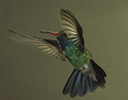 The Art
of Seeing: Many people have the technical aspects of photography
mastered, but lack vision. We'll work on improving your personal
vision and technique.
The Art
of Seeing: Many people have the technical aspects of photography
mastered, but lack vision. We'll work on improving your personal
vision and technique.
 Computer
Skills: Although this is not an Adobe Photoshop course, you
will be using the computer and using Adobe Photoshop to composite
digital images. Photographers COMPLETELY unfamiliar with a computer
should not attend, but for everyone else we'll get you in there
and started, and you'll learn the basics of how to do great things
with your digital images. Please note, however, that this is a
digital photography course, not an Adobe Photoshop course, so
our treatment of Photoshop will be rather basic and dedicated
to the work at hand -- making composites. The reason for this
is simple: In watching digital photographers for the past two
years I've noticed that most still shoot as they did when they
used film. They're not thinking digitally, and they're not exploiting
the full advantages digital has to offer. You'll be thinking digital
after this course, and you'll have the basic skills to execute
the images that you envision.
Computer
Skills: Although this is not an Adobe Photoshop course, you
will be using the computer and using Adobe Photoshop to composite
digital images. Photographers COMPLETELY unfamiliar with a computer
should not attend, but for everyone else we'll get you in there
and started, and you'll learn the basics of how to do great things
with your digital images. Please note, however, that this is a
digital photography course, not an Adobe Photoshop course, so
our treatment of Photoshop will be rather basic and dedicated
to the work at hand -- making composites. The reason for this
is simple: In watching digital photographers for the past two
years I've noticed that most still shoot as they did when they
used film. They're not thinking digitally, and they're not exploiting
the full advantages digital has to offer. You'll be thinking digital
after this course, and you'll have the basic skills to execute
the images that you envision.
One of the absolutely most important aspects of digital photography is the imposing and intimidating digital workflow. We'll teach you a system that works -- our system, from the start -- importing images into the computer from your card reader through the cataloging and filing of images that you'll be able to find later. Adobe Photoshop CS2's Bridge is a valuable tool for this, and we'll cover this thoroughly. This section, which we'll stress throughout the week, may very well be the most important information you, as a digital photographer, will ever learn!
Brain-picking time: As I tell every group, consider me a bucket of water and yourself as a sponge. It's my sincere hope, and I make it my goal, to impart everything I know, and that you need to know, by week's end. Saturday's last session is devoted exclusively to this objective.
If you haven't experienced the infectious joy of nature photography, you soon will. And you'll discover this rewarding pursuit only grows more exciting and challenging as your skills increase. And that's the rub, for to get the most out of your shooting, your skills should improve. Unfortunately, on many of our tours and out of state workshops we've found participants lacking in the essential basics of exposure, techniques, procedures, and basic usage. That being so, we sincerely wish everyone who takes any of our tours or exotic workshops or safaris would first take the time to do this course. As you'll discover, it will become the foundation of your skills, and your future photography will benefit enormously from doing so.
The above statement is even more relevant, and important, for digital photographers. While digital photography seems easy, because of the immediate feedback it provides, an 'easy' image doesn't necessarily make a good one. Further, digital shooting opens up a whole new world of opportunity where a photographer is no longer hampered by scenes with varying ranges of exposure (within limits, of course!), or by the limitations of a lens's depth of field. Wide-view images that lose their impact as a wide-angle shot become dynamic, riveting images when shot as a panorama -- sometimes by using a telephoto! A whole new world of photography is now available, one that truly mirrors what our eyes see and not what our films have been able to capture. Now, we can capture what we truly see, using digital to capture the world as we see it.
Many have compared our CNPC to a college-level course offered in a week, and almost everyone states that they haven't worked so hard in a very long time, BUT that they enjoyed the hard work! You will, too, and we promise you that you will learn quality photography!
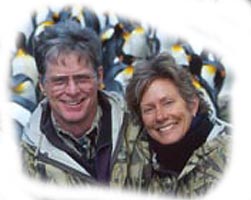 Joe
McDonald has been a full-time
professional wildlife and nature photographer since 1983. He is
the author of six books on wildlife photography and another on
African Wildlife, as well as a how-to video produced with his
wife, Mary Ann, on Photographing on Safari. His work has appeared
in every major nature and wildlife publication published in North
America. Along with operating their own stock photography business,
Joe is represented by over a dozen stock photo agencies worldwide,
including Corbis, Animals Animals, Auscape, Okapia, and others.
Joe
McDonald has been a full-time
professional wildlife and nature photographer since 1983. He is
the author of six books on wildlife photography and another on
African Wildlife, as well as a how-to video produced with his
wife, Mary Ann, on Photographing on Safari. His work has appeared
in every major nature and wildlife publication published in North
America. Along with operating their own stock photography business,
Joe is represented by over a dozen stock photo agencies worldwide,
including Corbis, Animals Animals, Auscape, Okapia, and others.
In addition to maintaining an active and informative website,
www.hoothollow.com, Joe is columnist for OUTDOOR PHOTOGRAPHER,
writing the 'Focus on Big Game' column, and Joe and his wife Mary
Ann are Field Correspondents for NATURE'S BEST Magazine,
and KEYSTONE OUTDOORS, writing a photography column, and
for both Joe Van Os's web magazine, www.photosafaris.com and the
Nature Photography Network, where they write a regular column
on wildlife and nature photography.
For over fifteen years Joe and Mary Ann have been teaching photography
courses and leading photography tours and workshops. Their very
popular photo tours and safaris have them afield for over twenty-five
weeks each year.
Joe has worked with Photoshop for several years, mainly for creating
sales promotional material and for web site use. Now, with the
advent of digital cameras, he is using Photoshop nearly daily.
He is a member of the National Association of Photoshop Professionals.
Mary Ann McDonald, who runs the business end of the Digital
Institute as well as food-kitchen-cooking team, has been a full-time
professional photographer since 1990. Mary is the author of 29
children's books on natural history, including titles on Leopards,
Flying Squirrels, Jupiter, Horses, Mosquitoes, and other diverse
topics. Mary Ann is a Field Correspondent for NATURE'S BEST
Magazine, and is co-author for photography columns for both Joe
Van Os's web magazine, www.photosafaris.com and the Nature Photography
Network.
If you've read the above biographies, you'll see that all of us are dedicated photographers that are interested in sharing our knowledge and helping people. I've been involved in teaching my entire adult life, from teaching assistantships in graduate school to a six-year stint as a high school biology teacher before starting my career as a wildlife photographer and photo workshop instructor. In this role I've been a full-time professional photographer and instructor since 1983.
I intend to make our Digital Courses every bit as successful, in terms of the knowledge conveyed, the quality of the experience, the intensity, and, just as importantly, the amiability and fun, that we've done with our CNPC and ANPC courses here at Hoot Hollow. Our first year, 2003, was a resounding success and I feel we accomplished these goals in spades. We only expect to do even better in the years ahead.